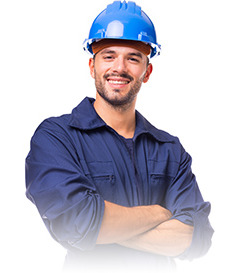
תוכן העניינים
How are absorption and thermal oxidation systems interacting?
Thermal oxygen systems are industry-accepted systems for treating and destroying pollutants
Organic and Fragrant
Oxidation of organic matter is a process in which air with organic pollutants is fed through a system with a high temperature combustion chamber. The high temperature in the cell promotes a reaction of the organic pollutant with the oxygen present in the air in a reaction called a combustion reaction (oxidation).
But what happens when the oxidation system enters organic matter containing chlorine or bromine molecules?
For many years, the Southern Oxidizer Thermal Regenerative (RTO) system has been working properly and without problems. After a period of time, corrosion (rust) was observed on the chimney of the RTO system. A chimney test carried out by the plant found significant deviations in emissions of HCl (hydrochloric acid) vapor and Cl2 (chlorine) gas. The plant clearly found that as a result of the change in the production process, organic substances containing chlorine molecules (Cl) were emitted. When organic substances containing chlorine molecules reach the RTO system, they are burned and produced in addition to the combustion products.
“ABP Company Chemical and Aerospace Engineering Ltd. “offered the plant a comprehensive solution to the HCl and Cl2 gas vapor removal problem by adding two-stage treatment systems.
Step One – Quencher
The gases exiting the RTO system are hot and for effective treatment and preservation of the structure of the treatment system materials must be cooled. ABP Chemical and Ventilation Engineering Ltd. has designed a two-part Quoncher column that sprays dizzy water on the gases entering the system to cool them.
Step two – Absorption column
In order to treat the HCl vapor and Cl2 gas emitted from the RTO system, ABP Chemical and Ventilation Ltd. Ltd. has designed and installed a filler alkaline absorption system that promotes the transition of the gaseous and the liquid phase pollutants into their non-harmful materials. Passing through the absorption column are emitted into the atmosphere through a chimney located on the absorption column.
After the system has been installed and executed, tests have been commissioned for the system chimney and the emission values are found to be in accordance with the values set in the emission permit issued by the Ministry of the Environment.





 Articles
Articles